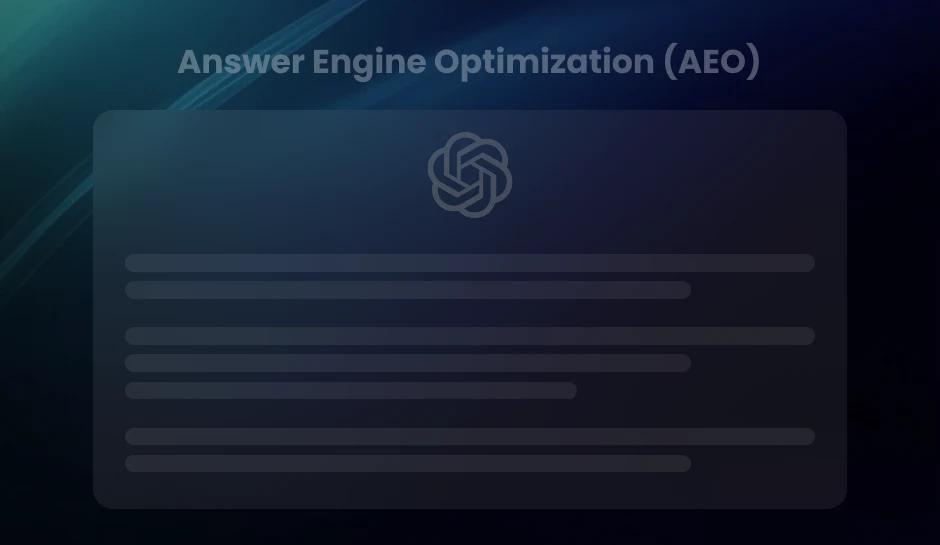
Data Governance vs Data Management: Defining Roles, Responsibilities, and ROI
Data governance defines the rules, responsibilities, and standards for how data should be used, while data management ensures those rules are implemented through systems, processes, and technologies. This article explores how aligning the two disciplines builds trust, strengthens compliance, enhances operational efficiency, and unlocks real business value from data assets.
As enterprises accelerate digital transformation, data has become the backbone of strategic decision-making, operational efficiency, and regulatory compliance. Across industries, vast volumes of data now drive AI models, shape customer journeys, and redefine supply chain resilience. Yet the value of data depends entirely on how well it’s governed and managed.
This is where two distinct, but deeply interconnected disciplines come into play: data governance and data management. Each plays a unique role in ensuring that data is accurate, secure, usable, and aligned with business objectives; yet confusion between them often blurs accountability and weakens results.
This article draws a clear distinction between governance and management, highlighting how their synergy enables a measurable impact. If you’re driving policy, overseeing regulatory compliance, optimizing data quality, or streamlining information workflows, these distinctions and connections directly affect your ability to lead with clarity and control.
Data Governance vs Data Management: Key Differences That Define Their Roles
Scope and Roles: Strategic Vision vs Tactical Execution
Data governance defines the strategic framework. It establishes the policies, standards, and accountability structures guiding how data should be treated across the organization. Governance dictates the rules- who can access what data, under what conditions, and how that access is monitored. Think of governance as the architect who designs the blueprint.
In contrast, data management is execution oriented. It handles the collection, storage, integration, validation, and distribution of data. Management teams operate within the policies established by governance but control day-to-day operations. They’re the builders, system administrators, database engineers, and data integration specialists who ensure the data flows where it’s needed.
Orientation: Governance Asks “Why and Who?”, Management Answers “How and What?”
Governance emphasizes rationale and accountability. It addresses why data is being used and who is responsible for its accuracy, security, and ethical use. Questions such as “Who owns customer data?” or “Why do we restrict access to financial records?” are addressed through governance committees and policy frameworks.
Management, on the other hand, focuses on action. It defines how data will be stored (cloud vs. on-premises), which tools will be used (ETL platforms, data lakes, and BI dashboards), and how frequently updates or backups should occur. While governance focuses on intent, management ensures operational delivery.
Time Focus: Long-Term Strategy vs Daily Operations
Data governance operates on a long-term horizon. It lays down principles that remain consistent over time, even as technologies evolve. Governance boards may revise policies annually or biannually, adjusting them only when regulatory shifts or business realignments necessitate changes.
Meanwhile, data management is seamlessly integrated into the daily workflow. Data engineers running ETL jobs, analysts preparing reports, or database administrators resolving inconsistencies, these functions demand real-time decisions and continuous oversight. Management stays in motion, adapting dynamically to operational needs.
Outcome: Trust and Consistency vs Usability and Efficiency
Robust governance produces trust. When policies are clear and roles are defined, data becomes a reliable resource. Consistency in access controls, lineage documentation, and classification ensures that decision-makers can depend on the underlying data.
Effective management delivers optimization. By refining storage, boosting performance, and automating integration, data management enhances usability. Smooth operations mean data is readily available, accurate, and usable across platforms without friction or redundancy.
- Governance drives strategic alignment, data stewardship, and regulatory compliance.
- Management ensures timely delivery, technical accuracy, and efficient system performance.
When viewed together, governance and management form two sides of a unified data strategy- one setting the rules, the other putting them into practice.
Pro Tip – To maximize impact, create a Data Responsibility Matrix that clearly maps each governance policy to its corresponding management action. This ensures that every strategic rule has an operational counterpart, preventing policy drift and reinforcing accountability across both business and IT teams.
Data Governance vs Data Management: Roles and Responsibilities Unpacked
| Function | Role/Group | Primary Responsibilities | Focus Area | Engagement Level |
| Data Governance | Data Owners | Define strategic value and usage policies; ensure data quality and security accountability | Policy definition, accountability | Strategic and cross-departmental |
| Data Stewards | Operationalize governance rules; track lineage, validate metadata, resolve data issues | Daily enforcement of governance standards | Operational, hands-on with data quality | |
| Governance Councils | Set policy direction; align governance with business goals; resolve conflicts | Policy alignment, prioritization | Executive and cross-functional oversight | |
| Note: Do not manage infrastructure; focus on rules, standards, and accountability | Governance frameworks | Policy and process-driven |
| Data Management | Data Engineers | Design, build, and maintain data pipelines and platforms; enable data integration and flow | System architecture, data movement | Technical, infrastructure-focused |
| Database Administrators | Ensure storage, backup, availability, and performance of databases | Data availability, security, performance | System operations and maintenance | |
| Data Analysts | Analyze and interpret data; build dashboards; contribute insights to business decisions | Business intelligence, data consumption | Insight generation from managed data | |
| Note: Do not define governance policies; they implement and interact with systems | Execution of defined standards | Technical implementation and analysis |
The Strategic Value of Data Governance in Modern Business
Governance as a Pillar of Regulatory Compliance
Organizations that establish robust data governance frameworks enjoy a clear advantage when navigating complex regulatory landscapes. Whether aligning processes with the General Data Protection Regulation (GDPR), the Health Insurance Portability and Accountability Act (HIPAA), or the Sarbanes-Oxley Act (SOX), governance ensures that data handling conforms to prescribed legal standards.
For instance, the GDPR requires explicit consent for data usage and swift reporting of breaches. Without governance structures that enforce clear data ownership and process accountability, compliance becomes inconsistent, exposing businesses to penalties. According to the European Data Protection Board, fines for GDPR violations reached €1.78 billion in 2023 alone. That level of financial risk leaves no room for fragmented data ownership or undefined access controls.
Risk Reduction Through Accountability and Transparency
Lack of governance turns data into a liability. Errors go unnoticed, unauthorized access proliferates, and no one can explain how a decision was made. Governance embeds auditability and accountability at every layer of the data ecosystem. It defines who can access what, when, and for what purpose, anchoring transparency across departments.
Establishing data lineage allows tracing data from its origin through every transformation. This capability accelerates root cause analysis during incidents and streamlines regulatory audits. Teams respond faster, with documented evidence supporting every change and transaction. Businesses that implement role-specific data policies backed by automated monitoring consistently reduce compliance failures and operational disruptions.
Alignment with Enterprise Strategy
Governance links data initiatives to business objectives. Without those ties, data projects tend to grow in silos, based on short-term operational needs rather than enterprise priorities. Governance provides the scaffolding to guide data policy, metadata management, and key performance indicators (KPIs) toward cross-functional outcomes aligned with strategic goals.
When boardroom strategy prioritizes customer personalization, governance ensures the right data sets, complete, accurate, and current, are available across marketing, product, and customer service. If risk avoidance is a guiding principle, governance facilitates consistent enforcement of data access rules, reducing the probability of insider leaks or inadvertent policy breaches.
Empowering Data-Driven Decisions Through Trust
No matter how advanced the analytics infrastructure, decision-makers will hesitate if they don’t trust the underlying data. Governance injects confidence into every report, dashboard, and forecast. By defining quality standards, validating inputs, and documenting processes, governance transforms raw data into reliable knowledge.
Gartner reports that poor data quality costs organizations an average of $12.9 million annually. The source of that cost isn’t just wrong numbers; it stems from missed opportunities, misinformed strategies, and delayed initiatives. Executives armed with governed data draw faster, bolder conclusions. Strategists model future scenarios with higher clarity. Teams execute with fewer revisions and less debate over which version of the truth to trust.
Pro Tip – Don’t wait for a compliance crisis or failed audit to build your governance framework. Start by prioritizing high-impact data domains, such as customer, financial, or health records, where the business risk is highest. Apply governance incrementally with clear KPIs, and use early wins to build momentum and executive buy-in.
Embedding Data Governance into Management Strategy: Aligning Policies, Platforms, and Practice
Aligning Governance Policies with Data Management Implementation
When governance principles operate in isolation from management execution, organizations lose control of data integrity. Alignment occurs through the operationalization of policies, translating standards, access protocols, compliance rules, and data definitions directly into the day-to-day processes that manage and handle data. This means incorporating governance rules into the data pipeline, not attaching them as post-processing checks.
Implementation teams actively map governance objectives to actionable rules and procedures. For example, if the policy mandates role-based access to personally identifiable information (PII), then access layers within data warehouses must be configured to enforce that rule automatically using identity and access management (IAM) tools. This tight integration ensures consistency and removes ambiguity.
Embedding Controls Within Enterprise Data Platforms
Enterprise data platforms, whether data lakes, data warehouses, or lakehouses, become functional enforcers of governance when suitable controls are embedded during development. Metadata tagging, logging, data lineage tracking, and automated quality checks anchor governance within the system architecture, rather than relying on manual enforcement.
For instance, Snowflake and Databricks offer native support for governance features like object tagging, access history, and differential access policies, enabling real-time compliance monitoring. These embedded controls also support audits, as historical access trails can be extracted directly from platform logs without manual investigation.
Creating a Unified Data Strategy
A unified data strategy emerges when governance is no longer a parallel function but a force multiplier for management objectives. The fusion of the two disciplines produces a system where governed data flows safely, consistently, and productively across the enterprise. In practice, this involves defining a shared roadmap where governance frameworks inform platform designs, ingestion policies, and output quality standards.
Cross-functional oversight bodies, such as data councils, often coordinate this alignment. These entities bring together legal, IT, engineering, and business leadership to ensure that every dataset, whether operational or analytical, adheres to the same rules across the board.
Governance and Management as a Business-Wide Collaboration
Siloed ownership of either governance or management functions reduces both accountability and results. When data governance is treated as a business-wide objective, and not merely the responsibility of compliance teams, synergy occurs. Marketing, HR, finance, operations, and product all become stakeholders in data structure, accuracy, usability, and protection.
Marketing teams influence taxonomies to ensure segmentation data is reliable.
Finance ensures that reporting data conforms to external auditing standards.
IT enforces infrastructure policies that support retention and redundancy requirements.
This collaborative model reduces duplication, accelerates data requests, shortens approval cycles, and strengthens governance outcomes. In mature organizations, joint KPIs collectively measure the success of governance and management, embedding responsibility across all functions.
Pro Tip- To truly embed governance into data management, automate compliance at the infrastructure level. Use policy-as-code tools like Apache Ranger, AWS Lake Formation, or Terraform scripts for IAM to codify governance rules directly into your data platforms.
Driving Governance Excellence: Structure, Stewardship, and Cultural Alignment
Role of Chief Data Officer (CDO) and the Data Governance Office
The Chief Data Officer leads the enterprise-wide data agenda, ensuring alignment between data initiatives and strategic business goals. This executive function oversees both governance and management, but it also anchors data governance as a discipline in its own right, with direct accountability for setting data policies, enforcing compliance, and establishing stewardship roles. The CDO typically reports to either the COO, CIO, or, in data-forward organizations, directly to the CEO.
Working alongside the CDO, the Data Governance Office institutionalizes policy frameworks and ensures their consistent execution. This office is often composed of governance leads, data quality analysts, compliance officers, and privacy specialists. Together, they define data domains, set stewardship rules, and monitor adherence to governance protocols across business lines.
Data Stewards as Governance Executors and Quality Champions
Data stewards operate at the tactical core of data governance. They act as domain-level custodians, translating policy into practice and ensuring that data definitions, classifications, and standards are applied consistently. In decentralized models, stewards are embedded in specific business units- finance, marketing, supply chain- serving as liaison points between technical teams and operational units.
Beyond serving this interpretative role, data stewards actively resolve metadata conflicts, validate data entries, and document lineage across systems. They not only understand the semantic meaning of data but also how it behaves across workflows. This proximity to day-to-day activities positions them to catch anomalies early and improve data quality iteratively and sustainably.
Cross-Functional Teams Driving Both Management and Governance
No governance initiative exists in isolation. Cross-functional governance councils, typically assembled at the business unit or enterprise level, bring together IT architects, business analysts, compliance officers, and data engineers to collaborate on governance and data management. These teams review proposed changes to business glossaries, approve master data models, assess risk, and validate alignment with enterprise architecture standards.
- IT and Security Teams ensure that data policies comply with cybersecurity frameworks and access protocols.
- Data Engineers implement the technical foundations for governance, such as lineage tracking, data hubs, and master data management systems.
- Business Stakeholders validate the practical utility of data definitions and flag risks related to data misuse or misunderstanding.
Through this collaborative model, data decisions are informed not in siloed forums but through shared accountability structures that balance compliance with usability.
Embedding Data Culture Within the Enterprise
Shifting to a governance-first mindset requires more than structure- it demands cultural transformation. Enterprises with mature governance programs tend to infuse data literacy initiatives across all functional levels. These include executive workshops, analytics certifications, and data ethics training tailored to the department. Intranet knowledge hubs, dashboards that track data quality KPIs, and governance metrics are integrated into performance evaluations, reinforcing this culture continuously.
When all employees understand how their role ties back to data precision, policy compliance, or risk mitigation, they contribute proactively to governance objectives. Data stops being an IT concern and becomes a shared responsibility. This cultural alignment enhances the effectiveness of stewardship and sustains the governance program beyond its initial rollout.
Pro Tip – Don’t treat data governance as just a top-down mandate. Empower data stewards at the ground level by giving them real decision-making authority, role-specific tools, and visibility into performance metrics. When stewardship is both accountable and enabled, governance becomes a living, evolving part of daily operations.
Turning Data into Strategy: The Business Value of Governance and Management
Improved Decision-Making from High-Quality, Governed Data
Precise data governance ensures consistency, accuracy, and accessibility across the organization. When leadership relies on structured data with verified lineage, decision-making shifts from a reactive to a proactive approach. Teams can identify trends earlier, assess risks more clearly, and forecast outcomes with greater precision. Data categorized by definitions, ownership, and permissible use eliminates ambiguity, making cross-department collaboration more effective. These fundamentals, as established by governance, enable data management systems to deliver analytical outputs that stakeholders can trust.
Accelerated Digital Transformation and Innovation
Organizations that embed governance into their data management frameworks accelerate the adoption of digital tools and platforms. Codified policies streamline integrations between enterprise applications, data lakes, and AI models. As a result, IT teams deploy new products faster while reducing rework caused by inconsistent data formats or undocumented lineage. Moreover, with governed metadata and reusable service APIs in place, business units can experiment with automation, machine learning, and advanced analytics without infrastructure bottlenecks slowing down delivery cycles.
Reduced Risk and Greater Agility in Complying with Regulations
Data governance frameworks define who owns what data, who can access it, and under what conditions. This rigor produces structured audit trails, eliminating the chaos of manual compliance tracking. With data classified by sensitivity and retention policies enforced by data management platforms, companies can respond rapidly to regulatory change. For example, in the months leading to GDPR enforcement, companies with well-established governance incurred fewer adjustment costs and breaches than those without. According to the IAPP-EY 2023 Privacy Governance Report, 74% of compliant organizations attribute their success to formal data governance programs.
Better Customer Trust and Market Differentiation
Customers reward companies that handle their data transparently, securely, and respectfully. Governance establishes the rules; data management enforces them. That alignment enables brands to articulate exactly how customer data is collected, stored, used, and deleted. This transparency, supported by capabilities such as data sovereignty controls and consent tracking, directly contributes to improved Net Promoter Scores and brand equity. In competitive sectors such as banking and healthcare, data trust has become a decisive differentiator, not just a matter of compliance hygiene.
High-quality data enhances the accuracy of forecasting and resource allocation.
Governed metadata accelerates data science and operational efficiency.
Integrated governance reduces the overhead of responding to new legislation.
Transparent data handling policies enhance brand loyalty and retention.
Pro Tip – To unlock the full business value of your data strategy, embed governance checkpoints into your digital transformation workflows, not just after deployment. This ensures every new integration, AI model, or analytics tool inherits compliance and quality standards by design, not as an afterthought.
Challenges and Considerations in Implementation
| Challenge Area | Issue | Impact | Recommended Strategy |
| Cultural Resistance & Lack of Data Ownership | Resistance to new roles and workflows | Ambiguity in accountability and ownership | Identify departmental influencers to champion change; engage early and consistently |
| Governance perceived as oversight | Low adoption, pushback from regional teams | Position governance as enabler; tailor engagement for local contexts | |
| Siloed Systems & Misaligned Taxonomies | Platforms evolve in isolation with unique logic and labels | Duplicates, schema conflicts, cross-department reconciliation issues | Create a unified data glossary; use data councils with multi-department representation |
| Department-specific structures (e.g., marketing vs finance vs operations) | Inaccurate cross-functional reporting | Align definitions and taxonomies collaboratively, not by enforcement | |
| Balancing Flexibility With Internal Control | Teams demand agility in access and experimentation | Unrestricted access can cause compliance and privacy risks | Use tiered access, role-based permissions, and sandbox environments |
| Overly tight governance can stall innovation | Slower delivery cycles, frustration among technical teams | Develop adaptive, dynamic policies that evolve with workflows and regulations | |
| Scaling With Data Growth & Complexity | Increase in streaming, varied, and fast-moving data sources | Manual governance processes break down at scale | Implement metadata strategy, automation, and AI-assisted governance tools |
| Manual lineage tracking and anomaly detection become impractical | Reduced oversight, increased risk of data quality issues | Adopt federated governance models for scalable, decentralized policy enforcement |
Bridging the Gap: Aligning Governance and Management for Enduring Data Strategy
Data governance and data management operate as distinct yet interdependent disciplines. Governance establishes the directives- the policies, standards, and responsibilities. Management executes those directives through systems, processes, and technologies. This structural interplay drives every mature data strategy.
Effective data-driven organizations don’t isolate these functions. They create a unified architecture that allows both to coexist seamlessly. Governance without management sits unused. Management without governance spirals into inconsistency. Only together do they produce repeatable, reliable, and business-aligned outcomes.
Embedding Governance in All Management Processes
Cross-functional teams must align strategic oversight with executional excellence. That includes weaving policy design directly into architecture planning, pipeline configuration, and access control routines. Prioritization shifts from isolated stewardship tasks to unified enterprise objectives such as:
- Reducing time-to-insight without increasing data risk
- Enabling traceability from data entry to business decision
- Designing lineage-aware environments with automated controls
These goals materialize only when governance doesn’t trail management but leads it, guiding with standards that inform every application, dashboard, and integration point across the data estate.
Build the Strategy: Clarity, Lineage, Accountability
What drives long-term success isn’t a framework sitting in a binder or a platform overflowing with tools. It’s clarity. Clarity about who owns what data. Clarity in how data definitions propagate across layers. Clarity in how every analyst, engineer, and executive interprets and uses data. All reinforced through clear lines of accountability.
Begin by examining your data processing procedures. Are policies being enforced operationally? Do teams make decisions based on consistent data sources? Is metadata being leveraged to show ownership and traceability?
When governance and management align under a shared vision, the result is a system of record that doesn’t just house data- it unlocks its full business value.
Key Takeaways
- Data governance defines the “why” and “who”, establishing policies, accountability, and compliance structures, while data management focuses on the “how” and “what”, operationalizing those standards through tools, platforms, and processes.
- Neither governance nor management works in isolation. When well-aligned, they create a trusted, efficient, and compliant data environment, supporting better decisions, innovation, and risk mitigation across the enterprise.
- A robust governance framework reduces regulatory risk, enables transparency and traceability, and fosters customer trust. Organizations with mature governance are more agile and audit-ready, even under evolving data privacy laws like GDPR and HIPAA.
- Sustainable data governance isn’t just about structure; it’s about people. Empowering stewards, cross-functional councils, and data-literate employees fosters a culture where data becomes a shared business asset, not just an IT concern.
Data governance and data management are different but complimentary to each other. They are equally essential to keep the processes running.
Just write to us at info@diggrowth.com to avail high-end data management and governance assistance for your organization.
Ready to get started?
Increase your marketing ROI by 30% with custom dashboards & reports that present a clear picture of marketing effectiveness
Start Free Trial
Experience Premium Marketing Analytics At Budget-Friendly Pricing.

Learn how you can accurately measure return on marketing investment.
Additional Resources
Don’t Let AI Break Your Brand: What Every CMO Should Know
AI isn’t just another marketing tool. It’s changing...
Read full post postFrom Demos to Deployment: Why MCP Is the Foundation of Agentic AI
A quiet revolution is unfolding in AI. And...
Read full post postAnswer Engine Optimization (AEO): The New Frontier of SEO in 2025
As digital experiences continue to evolve, so does...
Read full post postFAQ's
Data governance defines the strategic policies, roles, and standards that determine how data should be handled, focusing on accountability, quality, compliance, and access control. Data management, on the other hand, is the technical execution of those policies, covering how data is collected, stored, processed, and delivered through IT systems.
The Chief Data Officer (CDO) typically leads data governance, supported by a Data Governance Office, data stewards, and cross-functional governance councils. While governance is often driven by data and compliance leaders, it requires organization-wide collaboration across business, legal, and IT teams.
Yes, but it's risky and inefficient. Data management without governance often leads to inconsistent data definitions, access issues, poor quality, and compliance failures. Governance provides the structure and accountability that ensures data management efforts align with business and regulatory needs.
Together, governance and management improve data quality, reduce regulatory risk, and enhance operational efficiency—leading to better decision-making, faster innovation, and lower compliance costs. Organizations with mature data practices typically see stronger returns from analytics, automation, and digital transformation investments.
Alignment requires integrating governance policies directly into data systems and workflows. This includes embedding access controls, metadata standards, and lineage tracking into platforms like data lakes and warehouses. Collaboration between governance teams and technical implementers ensures that policies aren’t just defined, they’re enforced in practice.
 Rahul Sachdeva
Rahul Sachdeva  Arpit Srivastava
Arpit Srivastava 

